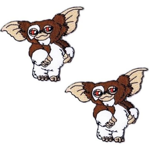FREE: 1 Sport Soccer IRON ON PATCH Soccer Player Head Butt Embroidered Clothing Accessory

A member of Listia gave this away for free!
Do you want FREE stuff like this?
Listia is 100% Free to use
Over 100,000 items are FREE on Listia
Declutter your home & save money

"Listia is like EBay, except everything is free" - Los Angeles Times

"An Awesome Way To Give And Get Free Stuff" - Michael Arrington, TechCrunch
This Stuff is Free Too:

FREE

FREE

FREE

FREE

FREE
The listing, 1 Sport Soccer IRON ON PATCH Soccer Player Head Butt Embroidered Clothing Accessory has ended.
1 New Adhesive Iron on PatchNew, Never Used!
(2.7 x 1.7 INCHES.)
I will do buy 1 get one half off if your interested in 2, just ask.
Association football, more commonly known as football or soccer, is a team sport played between two teams of eleven players with a spherical ball. It is played by 250 million players in over 200 countries and dependencies, making it the world's most popular sport. The game is played on a rectangular field with a goal at each end. The object of the game is to score by getting the ball into the opposing goal. Players are not allowed to touch the ball with their hands or arms while it is in play, unless they are goalkeepers (and then only when within their penalty area). Other players mainly use their feet to strike or pass the ball, but may also use their head or torso. The team that scores the most goals by the end of the match wins. If the score is level at the end of the game, either a draw is declared or the game goes into extra time or a penalty shootout depending on the format of the competition. The Laws of the Game were originally codified in England by The Football Association in 1863. Association football is governed internationally by the International Federation of Association Football (FIFA; French: Fédération Internationale de Football Association), which organises World Cups for both men and women every four years. According to FIFA, the Chinese competitive game cuju (蹴鞠, literally "kick ball") is the earliest form of football for which there is evidence.[13] Cuju players could use any part of the body apart from hands and the intent was kicking a ball through an opening into a net. It was remarkably similar to modern football, though similarities to rugby occurred. During the Han Dynasty (206 BC – 220 AD), cuju games were standardised and rules were established.
Phaininda and episkyros were Greek ball games. An image of an episkyros player depicted in low relief on a vase at the National Archaeological Museum

